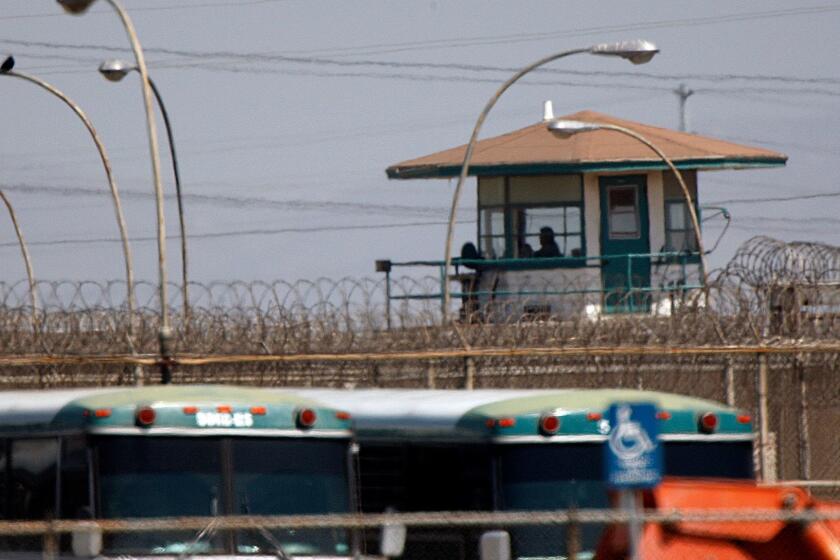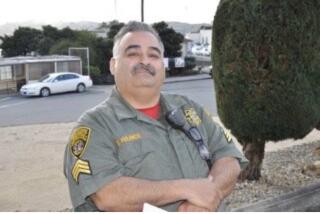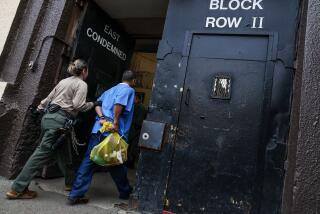Inmates talk of COVID fear and helplessness after transfers bring ‘the beast’ to San Quentin
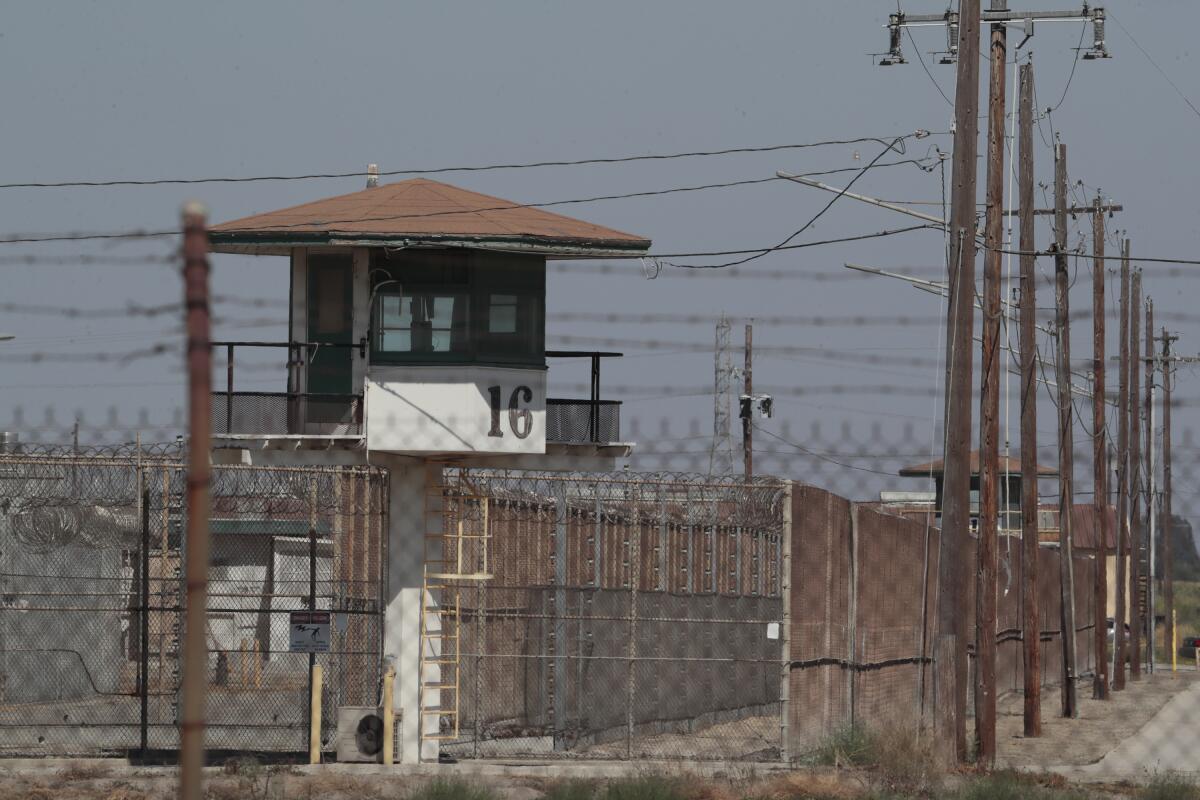
Sixty-six inmates from the coronavirus-ridden California Institution for Men were on buses in late May, headed from Chino to the prison at Corcoran where Frank Estrada was incarcerated.
What they didn’t know was that “the ‘beast’ came with them,” Estrada said, alluding to the lethal virus that hitched a ride on one of the most disastrous prisoner transfers in state history.
Corcoran State Prison was coronavirus-free before the buses arrived. It now has 10 active cases of COVID-19 and one reported inmate death.
San Quentin, California’s oldest prison, took in 121 transfers from Chino and has since been ravaged by the disease. Last week, it passed the 2,000 mark in infections, and now reports 862 active cases and 13 deaths among its 3,362 inmates.
The transfers deepened a health crisis within California’s correctional system that has now affected more than half of the state’s 35 prisons. At least 40 inmates statewide have died of COVID-related illnesses, and 1,905 had active infections on Tuesday.
Current and recently released inmates describe the terror behind bars as the virus raged and, one by one, fellow prisoners got sick and in some cases died. Several said they felt helpless because they could not easily practice social distancing or take other precautions available to those on the outside.
“The fear echoed through the cells,” said Estrada, 56, who managed to avoid the virus and was released early from a 16-month sentence for burglary. “Lots of grown men who aren’t scared of much were really scared.”
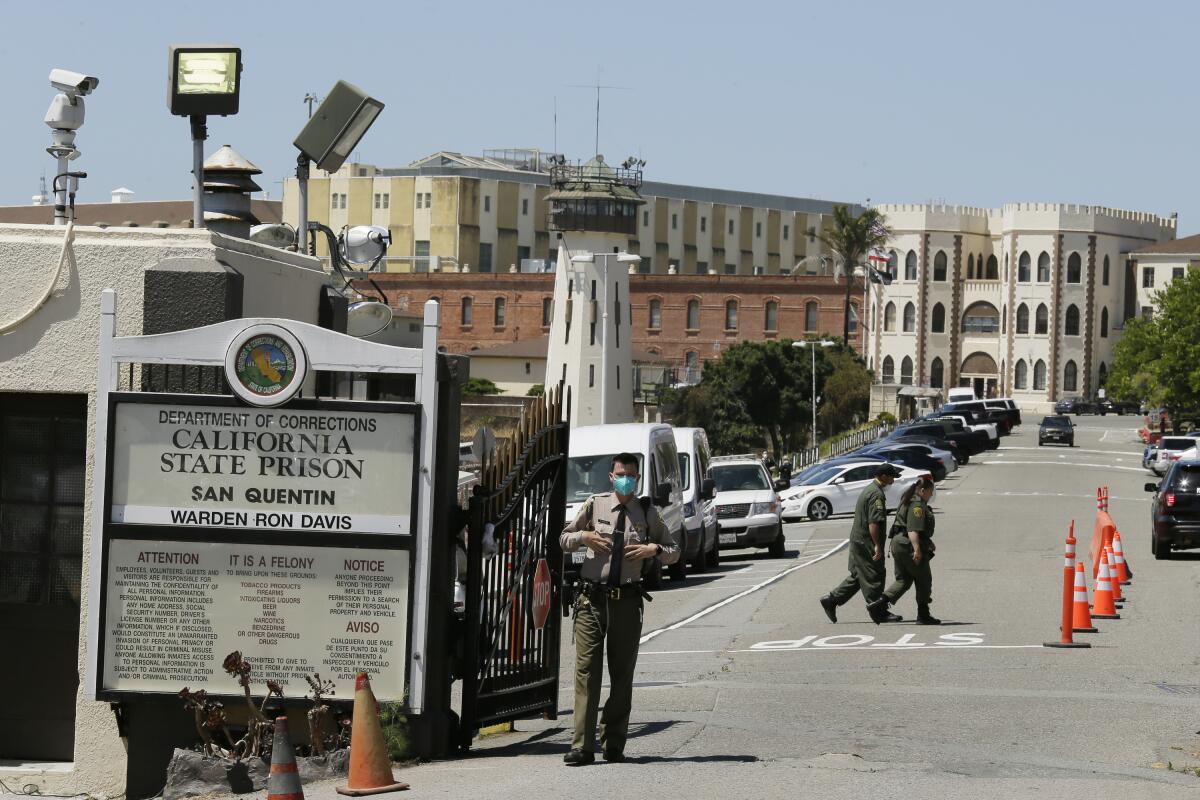
The outbreaks at Corcoran and San Quentin were avoidable had officials not made the transfers from Chino, according to elected officials, corrections experts and a court-appointed receiver overseeing prison medical care.
At the time of the moves, the Chino prison reported more than 600 cases of COVID-19 and nine deaths. The 700 inmates selected for transfer had medical conditions that made them especially vulnerable to the virus.
All were tested before they shipped out. But for reasons that corrections officials have yet to explain, some were tested weeks prior to the move, rendering the results useless.
“How a transfer occurred where someone did not check the dates on when those individuals were tested is actually incompetent and unconscionable,” said state Sen. Nancy Skinner (D-Berkeley), who chairs the Senate Public Safety Committee.
The move comes amid criticism over the transfer of hundreds of inmates to prisons from a Chino facility reeling from coronavirus infections.
In an emailed statement to The Times, a spokesperson for the court-appointed receiver acknowledged that the transfers were ill-conceived.
“In essence, the transfer process was opened too early, too quickly and without the necessary precautions in place,” the statement said.
“Changes have been made to the transfer and testing policies.”
Michael Kirkpatrick, 62, was deemed suitable for parole in April and was awaiting final approval and a release date when word of the Chino transfers reached San Quentin, and along with it a feeling of dread.
“We knew it was only a matter of time for us,” he said.
Kirkpatrick said he and his cellmate, Anthony Waldrip, both developed symptoms, including headaches. They were tested last month and got the results about two weeks ago.
“All they really did was say, ‘Here, take some Tylenol,’ and that’s it,” he said. “We were just kind of on the wish system: You wish you don’t have it. You wish you don’t get sicker.”
Kirkpatrick, who was released July 13 after his parole on a burglary conviction was expedited because of the outbreak, said he and Waldrip had their temperatures checked regularly by prison nurses but never saw a doctor.
“It was very scary,” he said. “Guys would yell, ‘Man down in 246! Man down!’ and it would be someone who fell out or got so sick they had to come and send them out of there. You’d hear that five or six times a day, and you’d say, ‘Am I next?’”
Most inmates were locked down around the clock. They lived on boxed meals for weeks. Showers were cut back to one every few days.
On Kirkpatrick’s tier of about 50 cells, only about five held men who were not infected, he said.
“It’s really bad,” he said. “A lot of guys who refused to take the test were considered to be not positive — even though many of them probably were.”
Kirkpatrick, who said he earned a college degree during his 22 years in prison and has a job waiting for him as a substance abuse counselor, is quarantined in a San Francisco motel, relishing his newfound freedom and counting his blessings.
Corrections officials say they have taken steps to protect staff, inmates and surrounding communities. They include shrinking the system’s population by almost 10,000 since March by reducing new admissions and expediting parole for some 3,500 inmates.
They also noted that some of the state’s prisons have no or few infections, and they defended their handling of the outbreak at San Quentin. In a statement, corrections officials said they have set up a 220-bed “alternative care site” on the prison’s grounds, given N95 respirators to all inmates and staff and sent hundreds of additional guards and healthcare workers to help reduce movements between housing units.
“We have taken extraordinary measures to remedy this situation,” the statement said.
Anxiety also pervades San Quentin’s death row, a five-tiered wing that houses 718 condemned men. At least seven who tested positive for COVID-19 have died in the last month.
“I pride myself on not being scared of anything or anyone on death row, not even death itself,” Kevin Cooper wrote in an online opinion article in May. “But this virus is more than just dying or death. It’s a torturous death, like lethal injection is.”
An iconic image has emerged on Twitter since early Saturday morning in Portland, when a woman wearing nothing but a mask and cap strode toward federal agents as they fired tear gas at protesters — a surreal image of human vulnerability in the face of an overpowering force.
Cooper, a high-profile inmate who is seeking DNA testing that he says could prove his innocence in the 1983 murder of four people in Chino Hills, wrote that he was doing his best to stay healthy.
“I social distance, I wash my hands regularly, clean this cage that I am forced to live in on a regular basis,” he wrote.
“Every inmate who lives next to me or around me to my knowledge is taking care of themselves too.”
Norm Hile, one of Cooper’s attorneys, said his client began coughing and suffering flu-like symptoms last month. He said Cooper seemed to be improving but was still awaiting test results.
“COVID should not be a death sentence on death row,” Hile said. “They did not get sentenced to death by COVID.”
Critics said the decision to transfer inmates to San Quentin was a bad one for several reasons, including its old-style barred cells that do not restrict airflow.
“A prison is like a cruise ship without the dance floors and buffets. People can’t get away from each other,” said defense attorney Brian Pomerantz, who represents death row inmates.
For many inmates, COVID-19 is more of an imminent threat than the executioner. California has not carried out a death sentence since 2006.
“There’s a real ‘sitting duck’ feeling to this,” Pomerantz said, adding that inmates at other California prisons also are worried about the virus, especially among vulnerable populations in the system’s medical facilities in Vacaville and Stockton.
On July 10, the day that Gov. Gavin Newsom announced as many as 8,000 California inmates could be let out early to help stem the spread of COVID-19, Pomerantz petitioned a federal court for the release of Waldrip, a client not held on death row.
Waldrip, 54, who suffers from high blood pressure and other ailments, has served about 20 years of a 25-years-to-life sentence for being a felon in possession of a firearm.
In January 2000, two Los Angeles police officers saw him in an apartment doorway holding a handgun and arrested him, court records state. Waldrip, who was visiting and did not own the gun, had taken it from a play area where an 8-year-old boy was showing it to his sister, according to court records.
The weapons charge was a “third strike” offense for Waldrip.
Pomerantz argued in court papers that Waldrip, who is eligible for parole in less than a year, “can get better medical treatment and has a substantially better chance of surviving COVID-19 outside of prison.”
As COVID-19 spread through California’s prisons, officials earlier this month replaced the correction system’s top medical officer, Dr. R. Steven Tharratt, and Newsom criticized the decision to transfer the Chino inmates.
Although kept separate from the rest of the inmate population at San Quentin, the 121 new arrivals used the same showers and ate in the same mess hall as other prisoners. After less than a week, San Quentin reported four positive cases among inmates and halted further transfers.
J. Clark Kelso, the court-appointed receiver overseeing California prisons’ medical care since 2008, said at a July 1 state Senate hearing that a transfer protocol had called for all inmates to test negative before being transferred. But it did not include a time frame for the tests.
“Although all patients had negative test results, in many cases, the tests were two, three and some cases four weeks old,” he said. “Far too old, to be a reliable indicator for the absence of COVID.”
Once transferred inmates began testing positive for COVID-19, the protocol was changed to require testing within seven days of transfer.
Prisoner advocates and healthcare experts said there was no defending the testing foul-up.
“It is basic medicine — a nurse could have told you those tests were too old,” said Don Specter, executive director of the Prison Law Office, which represents inmates in a long-standing lawsuit over medical care.
More to Read
Sign up for Essential California
The most important California stories and recommendations in your inbox every morning.
You may occasionally receive promotional content from the Los Angeles Times.
